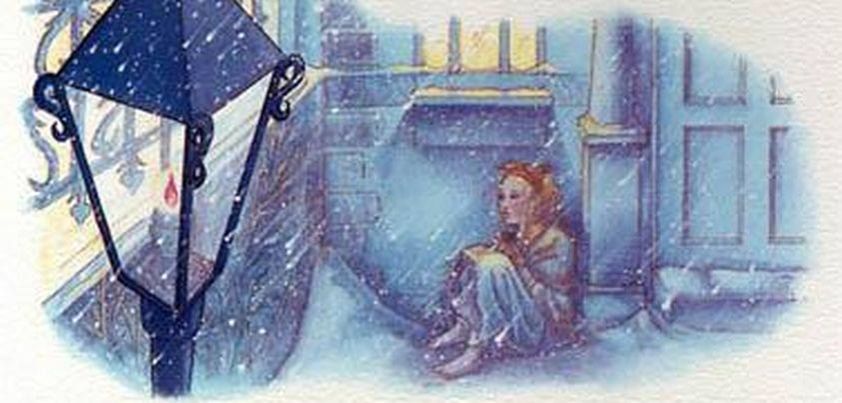 This well-known story by Hans Christian Andersen is one of the saddest Festive Season tales ever told. A cruel father sends his little girl out into the snow to sell matches. She crouches between two buildings, afraid to go home because she hasn’t made any sales. As she imagines the people inside their warm houses getting ready for a big New Year’s dinner, a vision of her beloved grandmother appears to take her to a better place. Themes include loneliness, poverty, cruelty, exploitation, indifference to suffering, hope, the power of fantasy, Christianity and life after death.
This well-known story by Hans Christian Andersen is one of the saddest Festive Season tales ever told. A cruel father sends his little girl out into the snow to sell matches. She crouches between two buildings, afraid to go home because she hasn’t made any sales. As she imagines the people inside their warm houses getting ready for a big New Year’s dinner, a vision of her beloved grandmother appears to take her to a better place. Themes include loneliness, poverty, cruelty, exploitation, indifference to suffering, hope, the power of fantasy, Christianity and life after death.
Original Text / PDF / Audio (1,000 words)
General Comments
Our source for the story was the Project Gutenberg e-book Fairy Tales of Hans Christian Andersen. Andersen trained for the theater when he was young. Although he never performed as an actor, this was to help him greatly later in life. As well as writing stories, authors of the time often performed public readings of their works. George Griffen, an American diplomat, wrote of an Andersen performance of “The Little Match Seller”:
He is a remarkably fine reader, and has often been compared in this respect to (Charles) Dickens – Dickens was in truth a superb reader, but I am inclined to think that Andersen’s manner is far more impressive and eloquent. Both of these men have always read to crowded houses. Dickens voice was perhaps better suited for the stage than the reading desk. It was stronger and louder than Andersen’s, but nothing like as mellow and musical. I heard Dickens read the deathbed scene of Little Nell in New York, and I was moved to tears, but I knew that the author himself was reading the story; but when I heard Andersen read the story of the Little Girl with the Matches, I did not think of the author at all, but wept like a child, unconscious of everything around me.
It is said that the story was written to call attention to the suffering being experienced by many children in Europe at the time. In addition to Andersen’s acting talent, one of the reasons that he was able to move people to tears when reading it aloud may be that he felt so strongly about its message. The most notable thing about the story is its powerful imagery. The story is told from a third person omniscient point of view, and is unusual in that there is almost no dialogue. There are only two sets of “spoken” words in the whole story, and these don’t occur until near the very end. The first is when the little girl cries out to the vision of her dead grandmother. The second is the suggestion that those who find the body the next morning can think of nothing better to say than: She tried to warm herself.